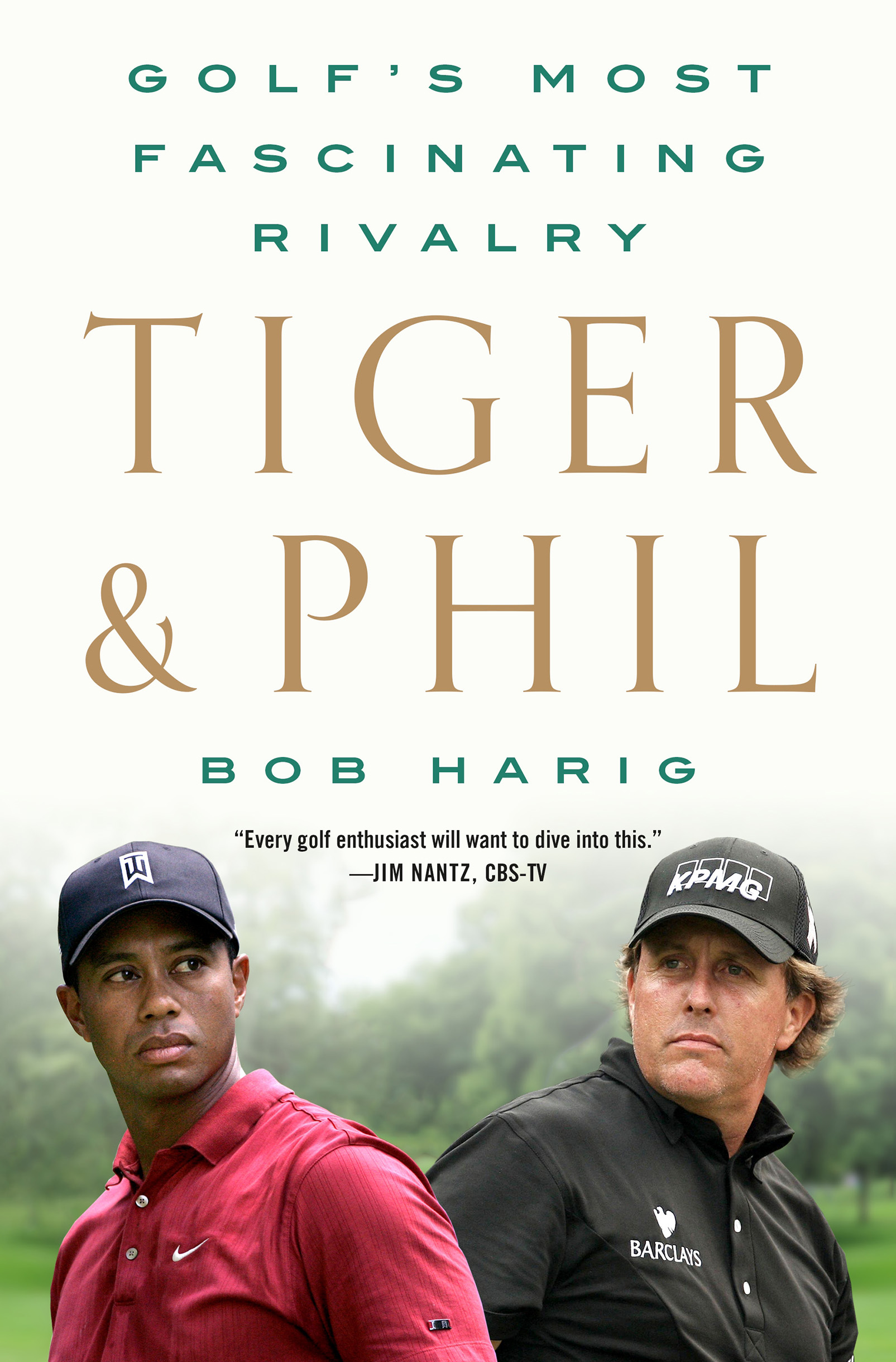Contents
Guide
Pagebreaks of the print version

The author and publisher have provided this e-book to you for your personal use only. You may not make this e-book publicly available in any way. Copyright infringement is against the law. If you believe the copy of this e-book you are reading infringes on the authors copyright, please notify the publisher at: us.macmillanusa.com/piracy.
For Jackie and Jack,
who became quite the experts in all things Tiger and Phil

Thirty years removed from his first PGA Tour victory, Phil Mickelson returned to the scene of one of his most underrated triumphs, the Omni Tucson Resort, where in 1991, he defied history to become the last player on the PGA Tour to win as an amateur.
Mickelson was just 20 years old at the time, a burgeoning career already in the works, possessing plenty of the moxie for which he grew famous but still a junior in college at Arizona State and with more amateur glory to attain. The following year, he went on to win his third National Collegiate Athletic Association (NCAA) individual title. He had already won the U.S. Amateur. His first years as a professional were set up handsomely, due to the exemption he received for winning what was then called the Northern Telecom Tucson Open.
And yet even with such a glitzy rsum, there was no way to have any realistic expectation that he would go on to win dozens of tournaments, including six major championships, and become one of the games greatest icons. There have been plenty of hotshot amateurs; Phil was among the rare ones to deliver on such promise.
Who could know that someone just as goodsomeone, as it turns out, who was betterwas coming along a few years behind Mickelson?
Tiger Woods was 15 then, cleaning up against the old guys at the Navy Golf Course in Cypress, California, playing off a +2.3 handicap or thereabouts and still a few months away from winning the first of six consecutive United States Golf Association (USGA) titles, an unprecedented feat that not even the great amateur Bobby Jones accomplished. But Tiger had nothing on Phil, who prior to Tigers emergence was a local legend in San Diego as a junior player and dusted all manner of opponents.
Like Mickelson, Woods possessed more golf trophies than he could stuff into his bedroom, and college recruiters were already knocking at his door. And he added a few more before signing multimillion-dollar endorsement deals that made him set for life before ever putting a tee in the ground as a professional.
Tiger and Phil didnt know each other then, but that would soon change. The trajectory of their careers would be intertwined for the better part of three decades with Tiger, a prolific winner not seen since the days of Jack Nicklaus, and Phil holding his own and hauling in a significant share of hardware himself, despite the presence of Woods. If Tiger was Jack in terms of victories, then Phil was Arnold Palmer in the way he won and lost dramatically, while also endearing himself to the masses.
Woods challenged the all-time PGA Tour victory record set by Sam Snead and made it his mission to haul down Nicklaus major mark, with combatants such as Mickelson treated as debris along the path to glory. While there was respect, at times there was also pettiness and standoffishness; their rivalry came in and out of focus as their careers endured various peaks and valleys.
Now, all these years later, things were different.
Mickelson was 50, playing in a PGA Tour Champions event at the same course where he won as an amateur, enjoying the memories, still as popular as everbut with a cloud hovering over the proceedings.
Woods was in a Southern California hospital, recovering from surgery performed earlier in the week after a horrific one-vehicle crash that could have claimed his life. That he was reported to be alert and capable of answering texts from some of his closer golf friends was encouraging yet somber news. The accident was severe enough to put in doubt the kind of qualify of life, at age 45, Woods might have going forward. Thinking about resuming his golf career was far too distant a thought to even consider under such troubling circumstances.
The Woods-Mickelson battles of bygone dayswhen they often didnt get along, with Tiger many times lording over Philseemed inconsequential, unimportant.
At times, their rivalry was bitter, other times just banter. They needled each other and took some pointed shots, too. For a while, they never spoke, and later on, they collaborated on pay-for-play television matches, including a $9 million winner take all contest in Las Vegas.
Whether they were truly rivalsor even friendsmight be debated on barstools until closing time and beyond. Tiger stood above the rest, his 82 victories and 15 major titles part of a rsum that elicits talk of the best ever. Phils 45 wins and six majors look scrawny by comparisonbut of course, such a comparison is unfair. Nobody has come close to Tiger. And yet, in their era, no one else has come close to Phil. It is nearly inconceivable that anyone today could match Phils record, let alone Tigers.
There is no question they were two of the most popular players the game saw since the days of Greg Norman and Nick Faldo, since Tom Watson and Johnny Miller, since Nicklaus and Palmer and Gary Player, since Ben Hogan and Sam Snead and Byron Nelson.
Mickelson got fired up to play against Tiger, knowing full well the difficulty and frustration in trying to beat him. And Woods wanted to defeat no one more than Phil, knowing full well that keeping any rival beyond a flagstick length only enhanced his ability to keep dominating the game.
All of that was in the background on February 28, 2021. Surely the memories might have flooded back for Phil. If he wanted to reflect, he could look back on any number of times that the names Woods and Mickelson were in the golf headlines.
Maybe it was when neither could quite overcome Payne Stewart at the 1999 U.S. Openthe first time both players were in contention at the same major championship.
Maybe it was in the final round of the 2001 Masters, when Phil played his way into an opportunity to knock the Tiger Slam sidewayswith Woods instead winning a fourth straight major championship.
Maybe it was the 2004 Masters, when Phil finally won his first major championship while Tiger was a rare bit player in the drama.
Take your pick: perhaps later that year when Tiger and Phil were disastrously paired as Ryder Cup partners? Or when Phil seemingly had the 2006 U.S. Open in his grasp while Tiger missed the cut for the first time in a major? Or how about in 2010 when Tiger returned to competitive golf for the first time since his own personal travails only to have Phil block his path to a green jacket?
There were other showdowns, dustups, and eyebrow-raising moments, to be sure.
Nobody ever said they needed to be buddies, and even in their late Tour years, despite appearances, they were not really close. Respect grudgingly grew between them. Appreciation for each others accomplishments undoubtedly came into focus more as they grew older. But when they were younger? No chance. Both were striving for the same things, and Woods became known as someone who was not going to let his rivals get too close.









